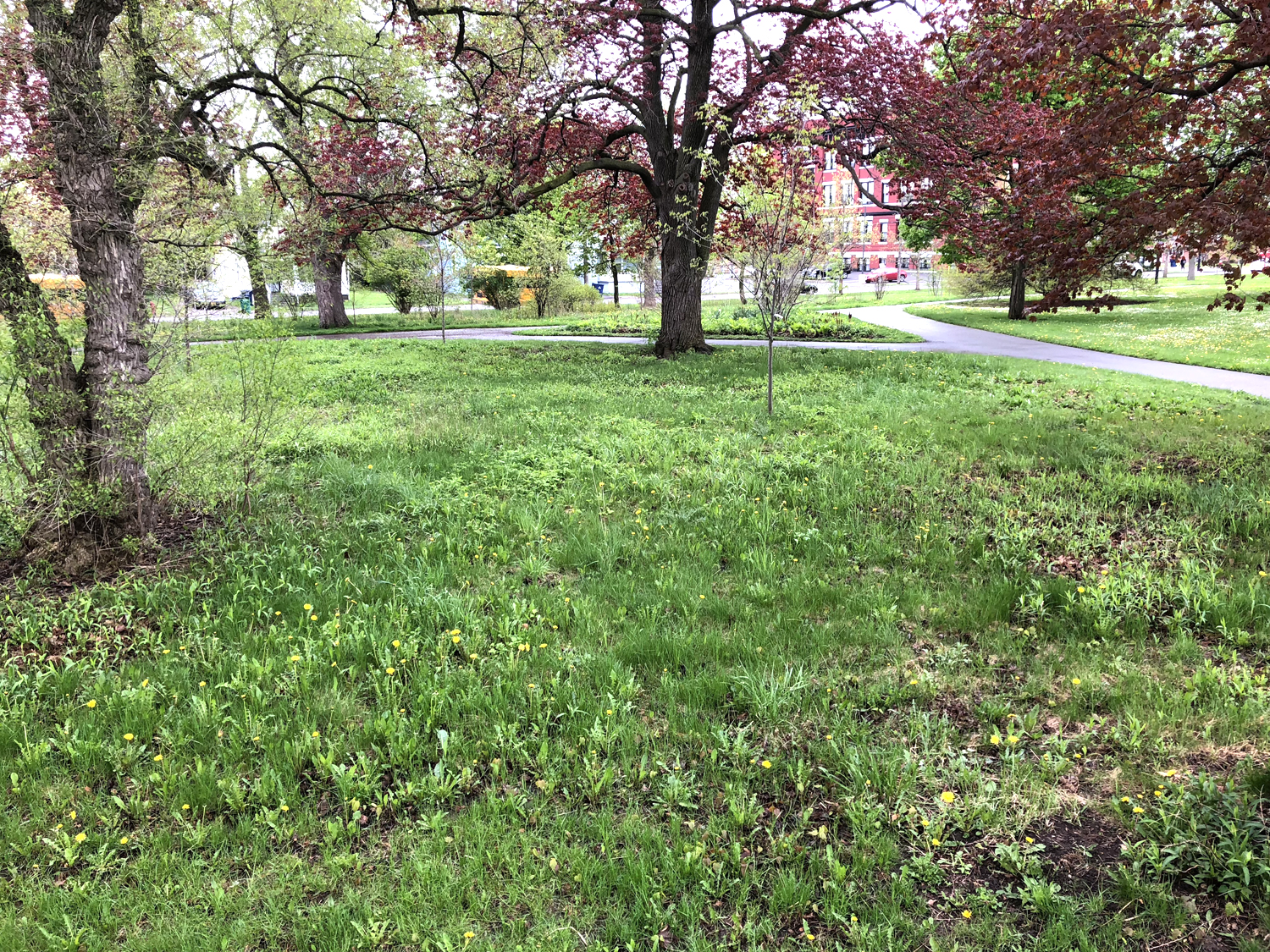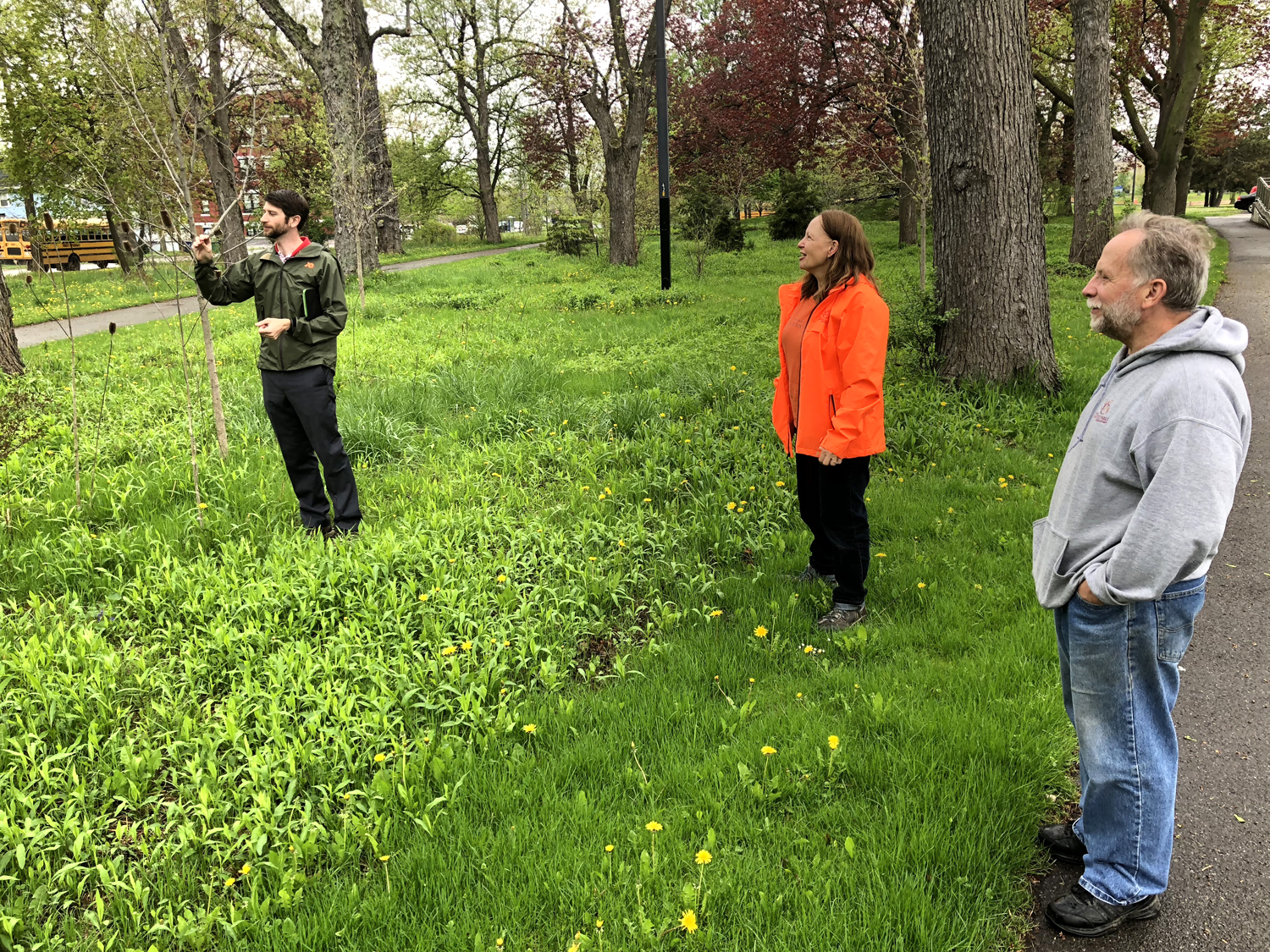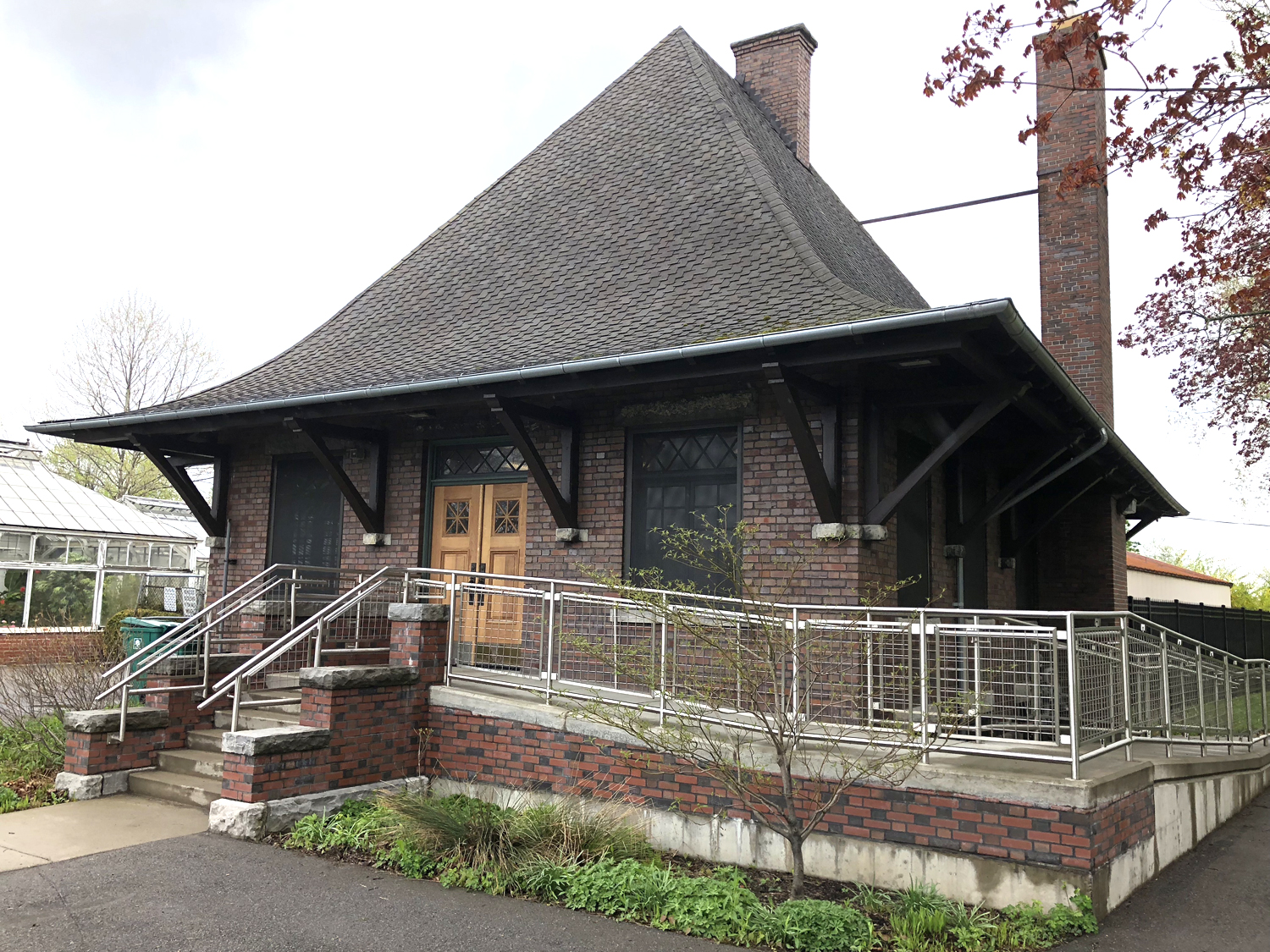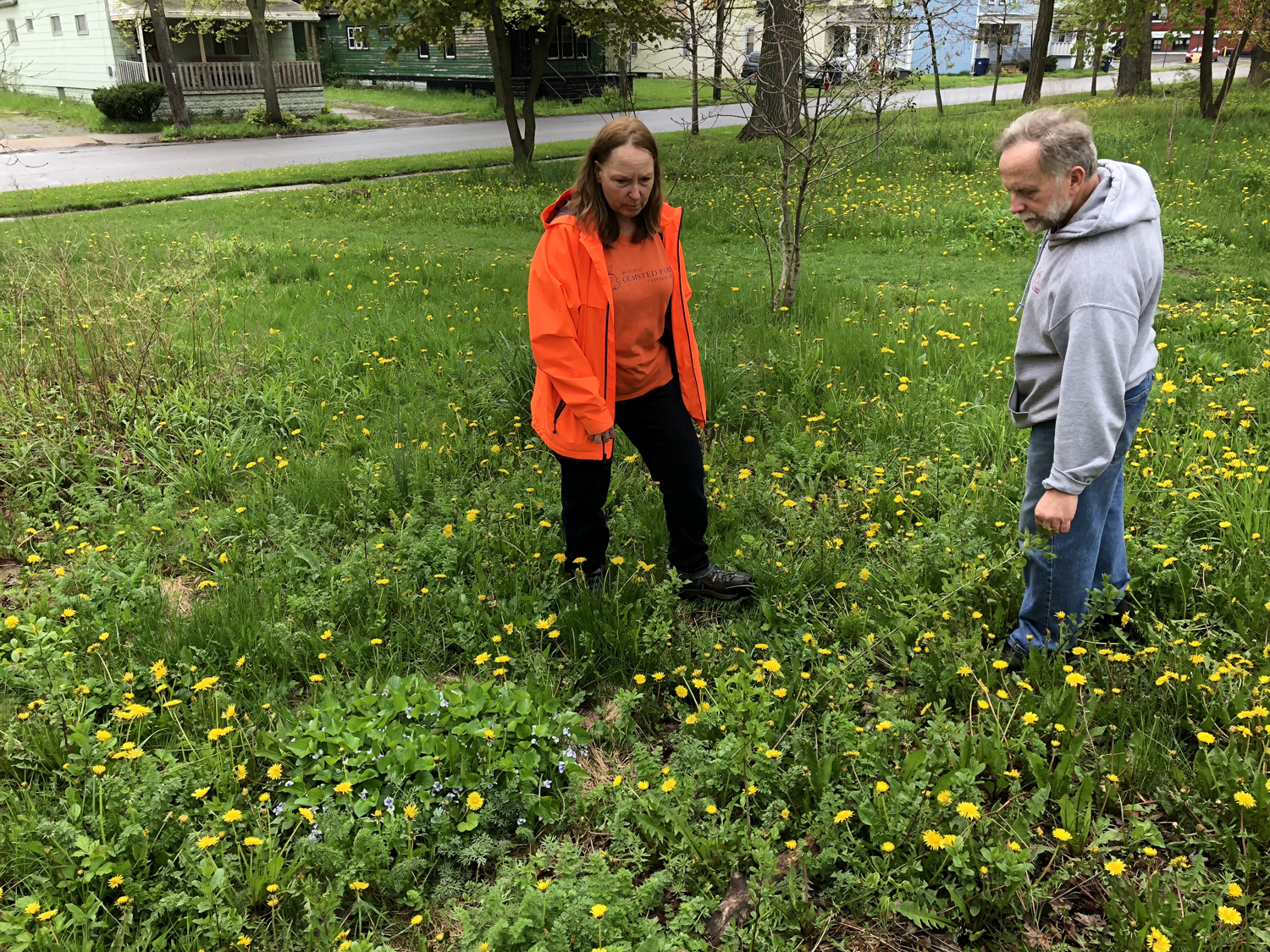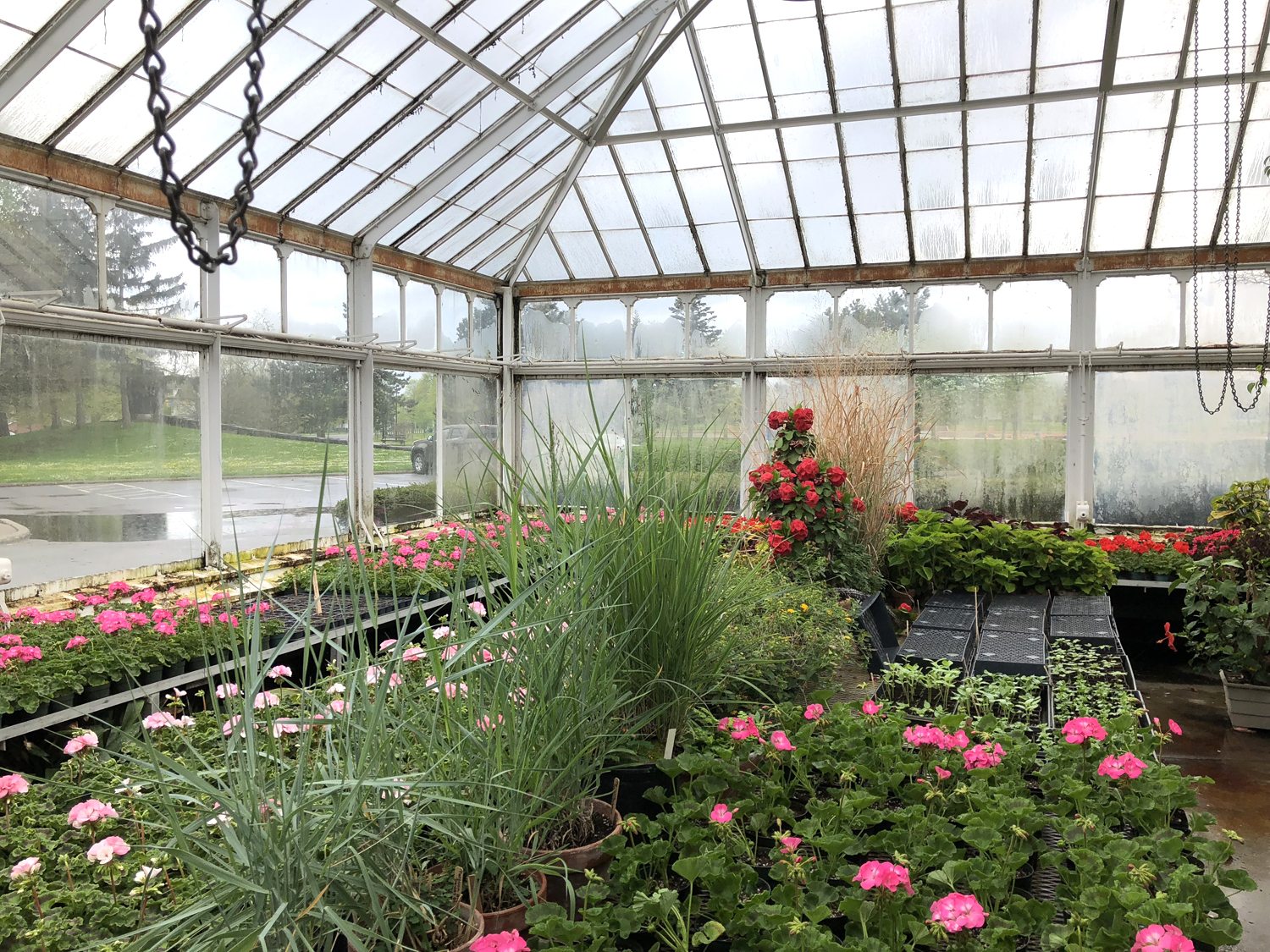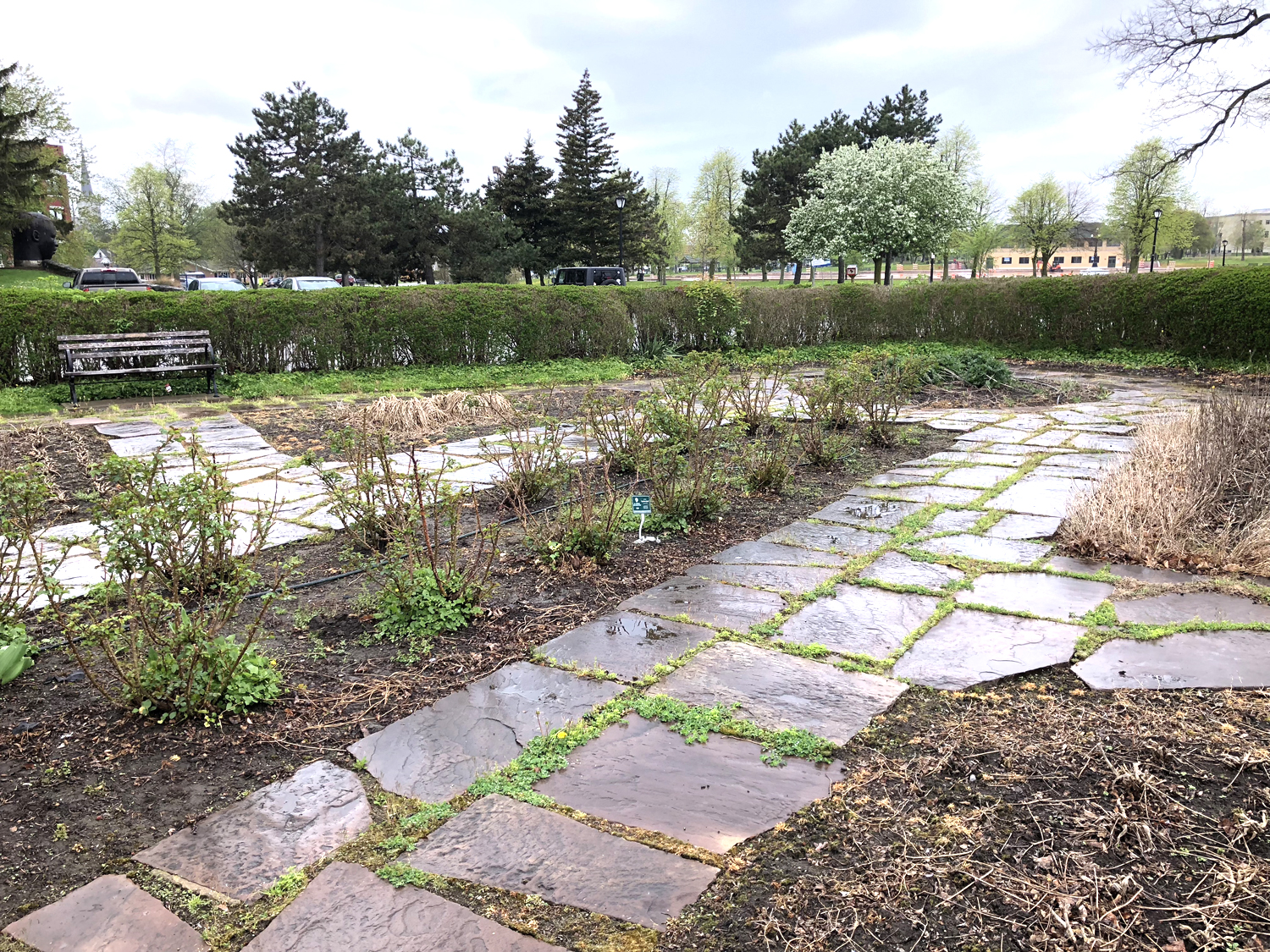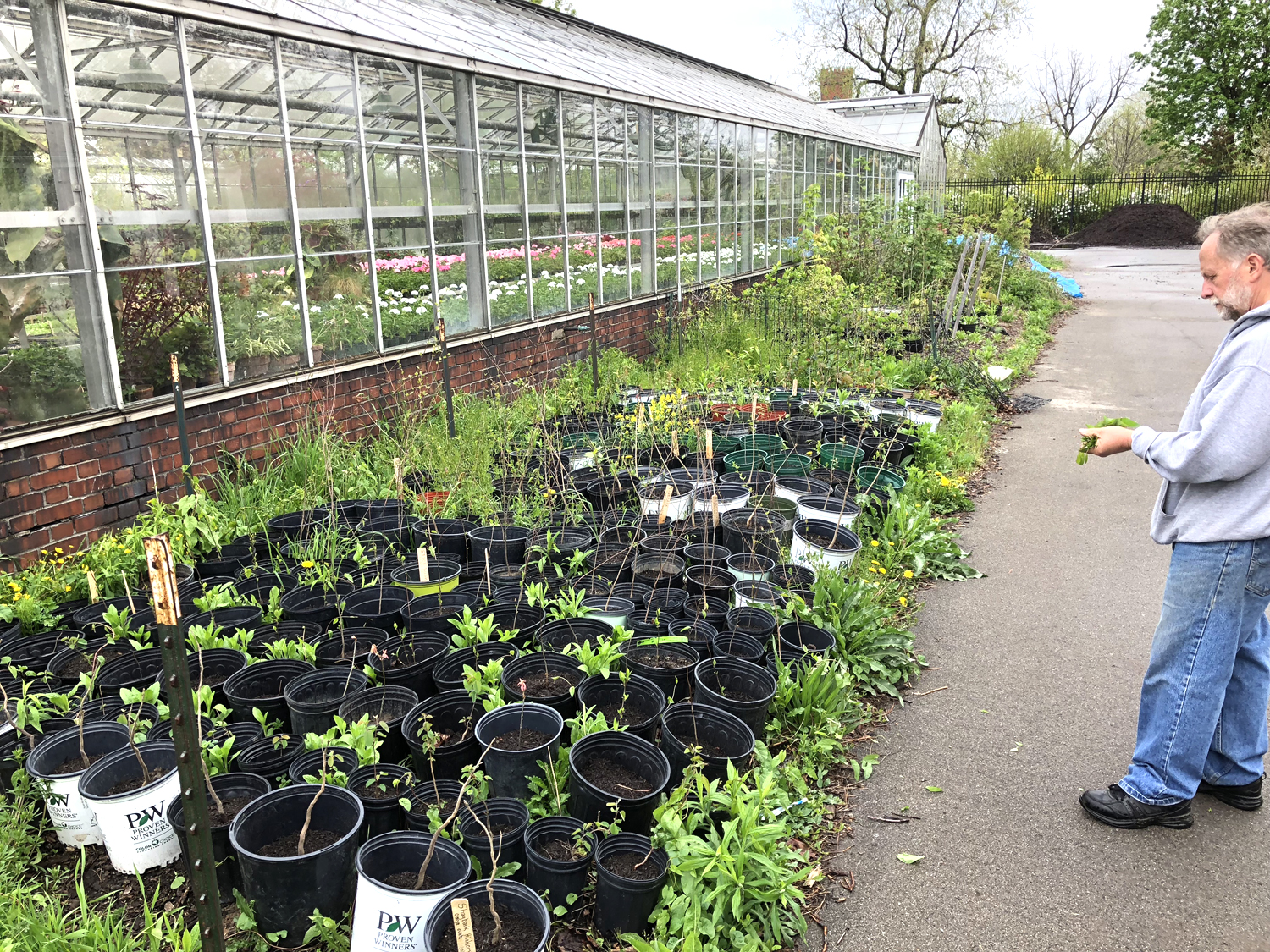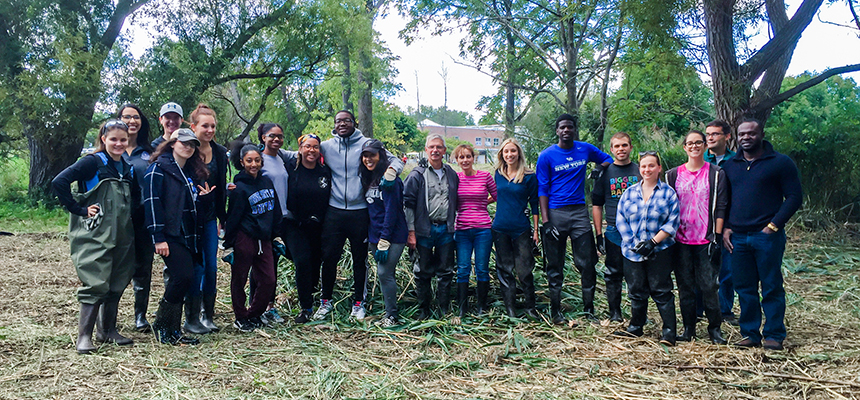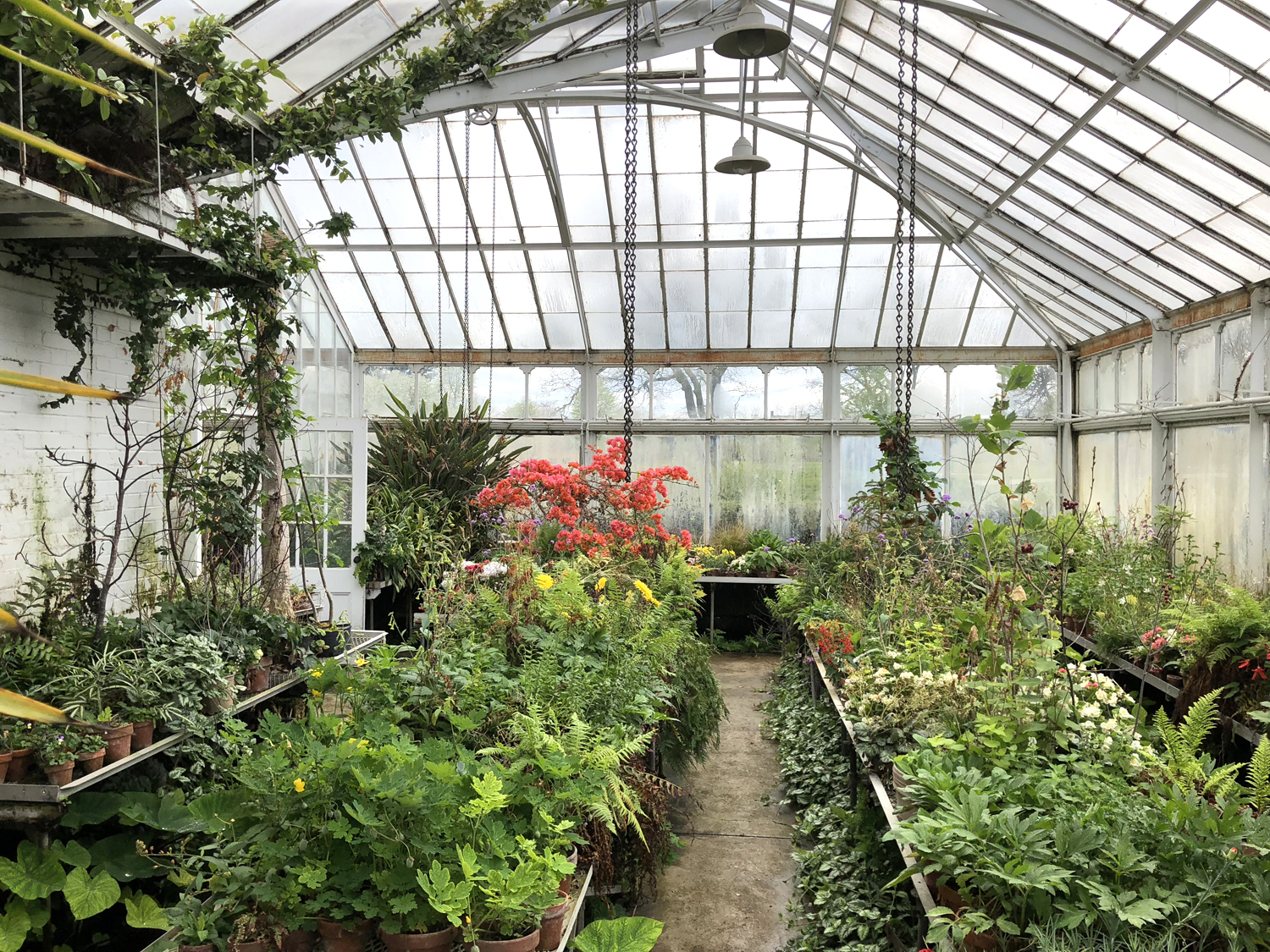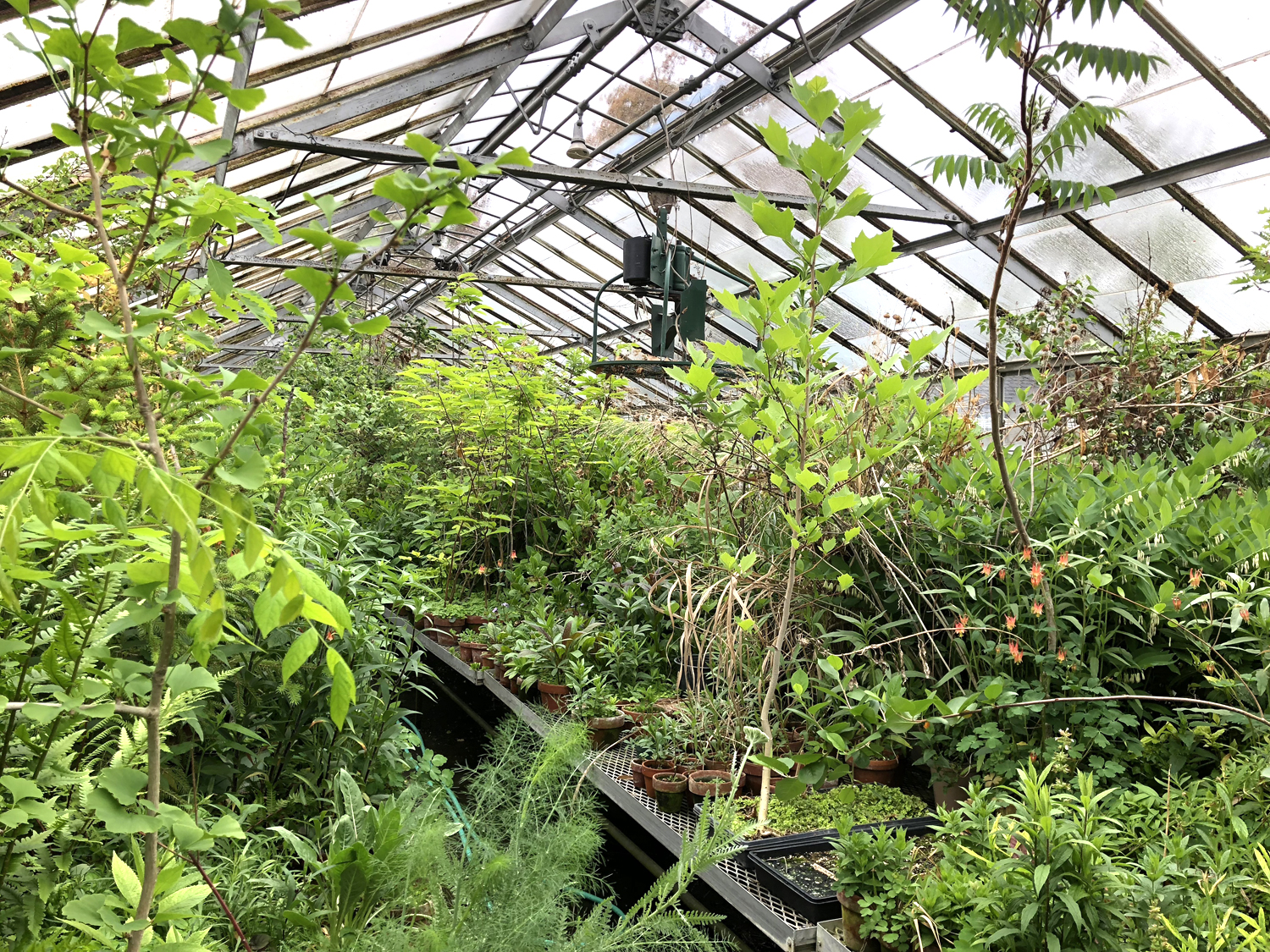I AM A HUGE FAN OF OLMSTED PARK CONSERVANCY’S EFFORTS TO SPEARHEAD THE MAINTAINED MEADOW AREAS (MMAS) MOVEMENT IN THE CITY.
These days, instead of seeing humdrum mowed lawns, the park system is coming back to life, thanks to these MMAs, which are controlled areas of natural growth, similar to what you might see in “real” nature.
Source: https://www.buffalorising.com/2018/05/mmas-and-your-olmsted-parks/
It’s incredible to think that we got so far from nature – everything needed to be manicured, which meant that all of the Olmsted parks had a golf course appearance about them. But that is no longer the case, thanks to Olmsted staff such as Greg Robinson Director of Park Administration, Jeffrey Krajnik, Martin Luther King Park Greenhouse Head Grower, and Eileen Martin, Parks Conservancy Supervisor.
I met up with the three MMA advocates a couple of days ago to discuss the new natural trend. I wanted to see how park-goers were responding to the addition of natural growth elements within the park system, which, to many, might actually appear to be unnatural. People are so accustomed to seeing the mowed lawns, that the appearance of the more natural MMAs might be a bit startling, which is funny when you stop to think about it.
I also wanted to know if the MMA trend would continue. Would we start to see more MMAs throughout the park system, and would the existing MMAs be expanded. To be truthful, I was hoping to persuade The Conservancy to dedicated the center of the Delaware Park S-Curves to a giant MMA, filled with pollinating plants and flowers, which would not only look fabulous, it would also be an important habitat creation for all sorts of birds, butterflies, bees, etc. After all, if you think about it, the center of the S-Curves is not a place where people walk, so it makes sense to hand it over to nature. Unfortunately, it’s also a DOT right of way, and we all know how much fun it is to work with the DOT on transformational projects.
Once again, the major issue is, letting people know that the MMAs are intentional. Not only are they meant to be there, they are a heck of a lot of work to get off the ground. For the first couple of years, until the MMA habitat is established, workers must continually remove invasive plants, which are tough and relentless.
“Wild ginger ground cover is host to pipe vine swallowtail butterfly larvae.”
To the trained eye, the MMAs are a work of art – an “intentional landscape”. But to the casual passerby, it might appear to be unkempt. That’s why Jeff spends some of his valuable time walking around neighborhoods surrounding MLK Park, placing informational flyers on residents’ door handles. This way, they can explain to people that the MMAs are part of the park strategy (Olmsted Naturally), and not due to slacking work ethics.
Jeff mentioned that the appearance of the MMAs is consistent with Olmsted’s vision for the parks – to bring nature into the city. He pointed out that many of the MMAs are on the edge of the parks, to offer a buffer to the noises of the passing cars, trucks, etc. “Can you imagine what we would be looking at right now without that MMA over there?” he said [pointing], as we stood at the edge of MLK Park, near the Shelter House (rehabbed six years ago).
As Jeff talked about the importance of the natural landscape, he, Eileen, and Greg walked along the park trails identifying all of the different indigenous plants that had successfully taken root, and were now proliferating. “We try to mix in pollinators with the more aggressive goldenrod and asters,” mentioned Eileen. “Plants that can stand up to aggressive invasive plants. It’s a battle, but the result is that we’re seeing more birds, butterflies, and bees.”
Greg chimed in, “The leaf litter that you see, is there to naturally suppress the bad stuff. It’s not that we didn’t have time to rake up some of the leaves in the fall, we actually use the leaf cover to stop the invasives from taking root. Eventually the leaves decompose, which provides important nutrients for the soil/plants.”
When it comes to keeping our Olmsted Parks looking beautiful, MLK Park is very instrumental. That’s because of the MLK greenhouse, which I finally got a chance to tour. From the outside, the historic greenhouse looks mid-size, but from the inside it’s actually quite sprawling. It’s amazing to see the hundreds of plant species that are growing inside, both annual and perennial. There are seedlings, cuttings… plants as far as the eye can see, including 6000 geraniums growing for Olmsted’s formal beds, and 10,000 assorted annuals for the rest of the park system. There was so much to take in that my head was spinning by the end of the winding tour.
Back on the outside of the greenhouse, away from the propagating natives, diminutive outdoor trees and shrubs (knows as “woodies”) grow, which will be transplanted throughout the park system when they reach the proper size.
There’s also a test garden out front, which is where various plants take root, so that the team can test their durability, while evaluating their overall appearances, including various growth characteristics. Jeff pointed out a compost tea brewer that they use to naturally fertilize the plants. The “tea” is made of water and leaf litter, which brews, just like tea, before being dispensed by workers with backpacks. Pretty cool!
If you’re thinking that this is all a lot of work for a team of three, then you’re right. This year, upwards of 2000 people will volunteer to ensure that all of this important work is completed. From individuals with big hearts, to corporations looking for team building exercises, the Buffalo community deserves a pat on the back for helping out at the Olmsted Parks.
In the end, cultivating MMAs is a slow process, and some take years to flourish. From mowing them down in the early spring with a mower set at 6″ (scatters the seeds and cultivates hardier plants), to creating “intentional paths and trails” through the MMAs (paths of desire), which creates a welcoming appearance, MMAs are a lot more complicated than one might think. At the same time, our Olmsted parks look great, and they are finally performing as originally intended, thanks to Mother Nature, and a guided hand from Jeff, Eileen, and Greg.

Source: https://www.buffalorising.com/2018/05/mmas-and-your-olmsted-parks/


